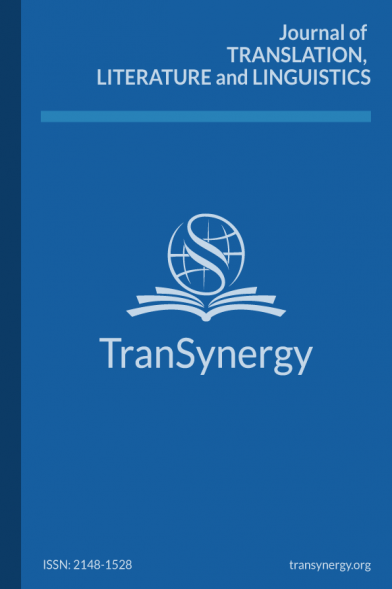The Classification of Languages and Social Processes: A Historical Analysis of Genetic Links
genetic linguistics, the classification of languages, the comparative method, historical linguistics, language families
The Classification of Languages and Social Processes: A Historical Analysis of Genetic Links
genetic linguistics, the classification of languages, the comparative method, historical linguistics, language families,
___
Aikhenvald, A. Y., & Dixon, R. M. W. (2001). Areal diffusion and genetic inheritance: Problems in comparative linguistics. Oxford University Press.
Beekes, R. S. P. (2011). Comparative Indo-European linguistics: An introduction (2nd ed.). John Benjamins Publishing Company.
Blust, R. (2013). The Austronesian languages (2nd ed.). Asia-Pacific Linguistics.
Bybee, J. (2010). Language, usage and cognition. Cambridge University Press.
Campbell, L. (2013). Historical linguistics: An introduction (3rd ed.). MIT Press.
François, A. (2014). Trees, waves and linkages: Models of language diversification. In C.
Greenberg, J. H. (2005). Genetic linguistics: Essays on theory and method. Oxford University Press.
Harrison, S. P. (2003). On the limits of the comparative method. In B. D. Joseph & R. D. Janda (Eds.), The handbook of historical linguistics (pp. 213-243). Blackwell Publishing.
Millar, R. M. (2015). Trask's historical linguistics (3rd ed.). Routledge.
Milroy, J. (1985). Historical description and the ideology of the standard language. In R. Lass (Ed.), The Cambridge history of the English language (Vol. 3, pp. 344-377). Cambridge University Press.
Mufwene, S. S. (2003). Language endangerment: What have pride and prestige got to do with it? In B. D. Joseph, J. DeStefano, N. G. Jacobs, & I. Lehiste (Eds.), When languages collide (pp. 124-135). Ohio State University Press.
Nichols, J. (1992). Linguistic diversity in space and time. University of Chicago Press.
Nichols, J. (2003). Diversity and stability in language. In B. D. Joseph & R. D. Janda (Eds.), The handbook of historical linguistics (pp. 283-310). Blackwell Publishing.
Rankin, R. L. (2003). The comparative method. In B. D. Joseph & R. D. Janda (Eds.), The handbook of historical linguistics (pp. 183-212). Blackwell Publishing.
Renfrew, C. (1989). Models of change in language and archaeology. Transactions of the Philological Society, 87(2), 95-119.
Ruhlen, M. (1987). A guide to the world's languages: Classification. Stanford University Press.
Thomason, S. G. (2003). Contact as a source of language change. In B. D. Joseph & R. D. Janda (Eds.), The handbook of historical linguistics (pp. 687-712). Blackwell Publishing.
Thomason, S. G., & Kaufman, T. (1988). Language contact, creolization, and genetic linguistics. University of California Press.
- ISSN: 2979-9503
- Yayın Aralığı: Yılda 2 Sayı
- Başlangıç: 19.12.2022
The Historical Significance of Chinese Character Simplification
“Intralingual Hijacking” As a Newly Coined Feminist Translation Strategy
Ezgi Su SEZER & Aslı Özlem TARAKCIOĞLU
The Classification of Languages and Social Processes: A Historical Analysis of Genetic Links
